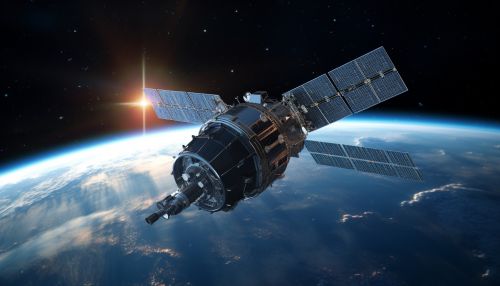Communication satellite
Introduction
A communication satellite is an artificial satellite that relays and amplifies radio telecommunications signals via a transponder. It creates a communication channel between a source transmitter and a receiver at different locations on Earth. Communication satellites are used for television, telephone, radio, internet, and military applications.
History
The idea of a communications satellite was first proposed by Arthur C. Clarke in 1945. The first active communications satellite, Telstar 1, was launched by NASA in 1962, followed by the first geostationary satellite, Syncom 3, in 1963.
Design and Structure
Communication satellites are designed to withstand the harsh conditions of space and to provide reliable telecommunications signals over a long lifespan. They are typically composed of a bus and a payload. The bus provides power, attitude control, and telemetry, tracking and commanding (TT&C) functions, while the payload is made up of the transponders, which receive, amplify, and retransmit signals back to Earth.


Types of Communication Satellites
There are several types of communication satellites, including geostationary (GEO), low-Earth orbit (LEO), medium-Earth orbit (MEO), and highly elliptical orbit (HEO) satellites. Each type has its own unique characteristics and uses.
Geostationary Satellites
Geostationary satellites orbit the Earth at the same speed as the Earth's rotation, allowing them to stay in a fixed position relative to the Earth's surface. This makes them ideal for television broadcasting and weather monitoring.
Low-Earth Orbit Satellites
Low-Earth orbit satellites are closer to the Earth, allowing them to provide faster communication speeds and lower latency. They are often used for voice communication, such as mobile phone networks.
Medium-Earth Orbit Satellites
Medium-Earth orbit satellites are used for navigation systems, such as the Global Positioning System (GPS).
Highly Elliptical Orbit Satellites
Highly elliptical orbit satellites have an orbit that takes them close to the Earth at one end and far away at the other. This allows them to provide coverage over the polar regions, where geostationary satellites cannot reach.


Applications
Communication satellites have a wide range of applications, including broadcasting, telephony, internet services, and military uses.
Broadcasting
Communication satellites are widely used for broadcasting television and radio signals. They can broadcast to a large area, making them ideal for reaching remote and rural areas.
Telephony
Satellites are used for long-distance telephone calls, particularly in areas where it is not practical to lay cables.
Internet Services
Satellites provide internet access in areas where terrestrial internet services are not available. They also provide backup internet services in case of network failures.
Military Uses
The military uses communication satellites for a variety of purposes, including reconnaissance, navigation, and communication.


Future Trends
The future of communication satellites is likely to be influenced by advances in technology, such as the development of high-throughput satellites (HTS) and the use of higher frequency bands. These advances could lead to faster data rates and more efficient use of the radio spectrum.
